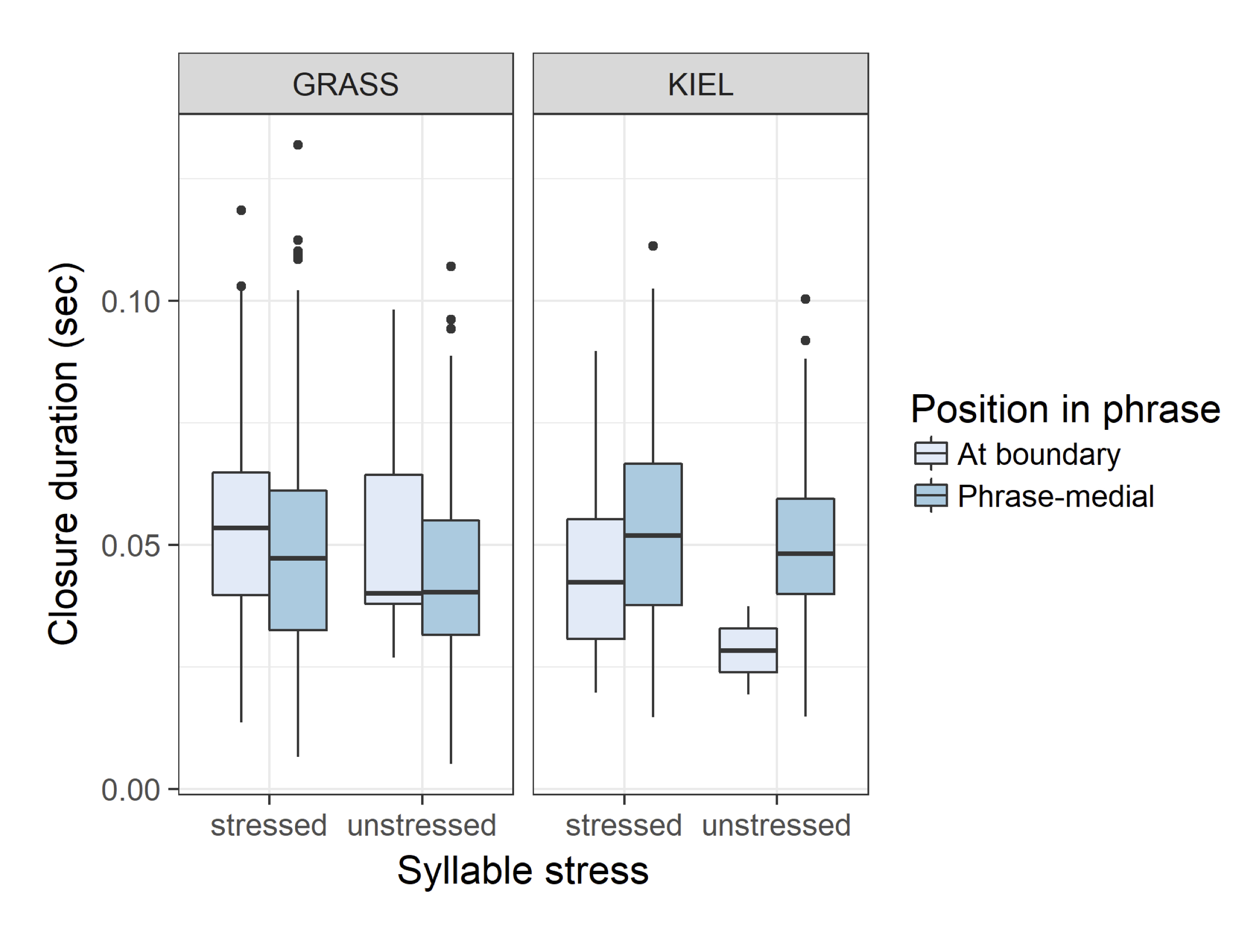Prosodic effects on plosive duration in German and Austrian German
- Published
- Fri, Nov 01, 2019
- Tags
- rotm
- Contact

This study investigates the acoustic cues used to mark prosodic boundaries in two varieties of German, with a specific focus on variations in production of fortis and lenis plosives. Based on prosodic-boundary-adjacent and non-boundary-adjacent plosives from GRASS (Austrian German) and the Kiel Corpus of Read Speech (Northern German), we found that closure and burst duration features, as well as duration of a preceding adjacent segment,vary consistently in relationship to the presence or absence of a prosodic boundary, but that the relative weights of these features differ in the two varieties studied. Whereas stress marking in plosives is being driven more by burst duration in the Kiel Corpus data, it is driven more by closure duration in the GRASS data. This study suggests that boundary detection tools require variety-specific training materials, or else information from comparative studies such as the current work, in order to attain optimalfunction in specific varieties or dialects.
Figure: Closure duration across both corpora (Kiel Corpus and GRASS corpus), separately for boundary-adjacent and non-boundary-adjacent plosives.
More information and detail can be found in our paper (https://www.isca-speech.org/archive/Interspeech_2019/pdfs/2197.pdf).
Related Project: https://www.spsc.tugraz.at/research-projects/cross-layer-prosody-models-for-conversational-speech-fwf-elise-richter-grant-v638-n33.html
Related Course: https://www.spsc.tugraz.at/courses/Guest_lecture_course_by_Zellers.html
Browse the Results of the Month archive.
